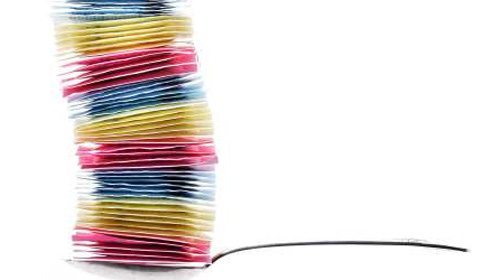I never knew much about artificial sweeteners except that my grandmother used it because of her diabetes. I also knew that blue packets (Equal®) are better than pink packets (Sweet 'n Low®). According to my research (mostly Wikipedia), the first artificial sweetener was discovered by accident & it became popular with manufacturers because it was cheaper than actual sugar. To verify this claim, I went onto Amazon and looked up the prices of white sugar as well as 4 popular sugar substitutes. Here is the verdict -
- C&H® Pure Cane Sugar - $0.08 per oz
- Equal® Zero Calorie Sweetener - $0.33 per oz
- Sweet 'n Low® Zero Calorie Sweetener - $0.27 per oz
- Splenda® No Calorie Sweetener - $0.79 per oz
- Truvia™, Nature's Calorie-Free Sweetener - $0.07 per oz
Even though these calculations are not absolute; the differences in price is pretty clear. If the prices of artificial sweeteners can be up to 10x more than that of sugar, then why are they so popular? As a frequent user of artificial sweeteners, I wanted to know more about their pros & cons. I did more research (mostly Wikipedia again) & did these following comparisons -
Aspartame (Equal®)
First discovered in the early 1980s, aspartame is the common sweetener used in diet
soft drinks. It is 200x sweeter than sugar and it is made mainly of 2 amino acids.
Unfortunately, aspartame breaks down @ high temperatures so it can't be used for
cooking/baking. Health wise, aspartame has been involved in many controversies
in the past (i.e. aspartame metabolites were thought to be toxic/carcinogenic); but all
of the claims have been rebutted by the FDA.
Neotame
Used mostly in fruit/vegetable juices, neotame is 7,000x to 13,000x sweeter than
sugar. It is similar in properties to aspartame but more stable. Other than having a
bitter after taste, neotame is 1 of the only artificial sweeteners that is ranked as "safe"
by the Center for Science in the Public Interest
Saccharin (Sweet 'n Low®)
Discovered in 1957, saccharin was the first table top artificial sweetener & it is 300x
sweeter than sugar. In addition to having a bitter & metallic after taste, this sugar
substitute was linked to bladder cancer in rodents in the 1970s. However, all health
warnings have been removed since 2000.
Sucrolose (Splenda®)
Even though it was discovered in 1976, sucrolose wasn't really made popular until
recently. Unlike earlier sweeteners, sucrolose is made from sugar & has no artificial
flavor. Additionally, sucrolose can be heated up to 450 degrees which makes it
appropriate for cooking/baking. The 2 main negative attributes are that (1) it does not
produce browning/caramelization like sugar & (2) it has potential negative
environmental impacts.
Stevia (Truvia™)
Using only the leaf of the stevia plant, this natural sweeter that is 300x sweeter than
sugar. Like sucrolose, stevia can also be used for cooking/baking. Although Truvia™
and other stevia products have been popularized since 2008, not all stevia products
have been approved by the FDA.
After doing my research, it doesn't seem like artificial sweeteners are horrible for people's health. So go ahead & sweeten it up!

No comments:
Post a Comment